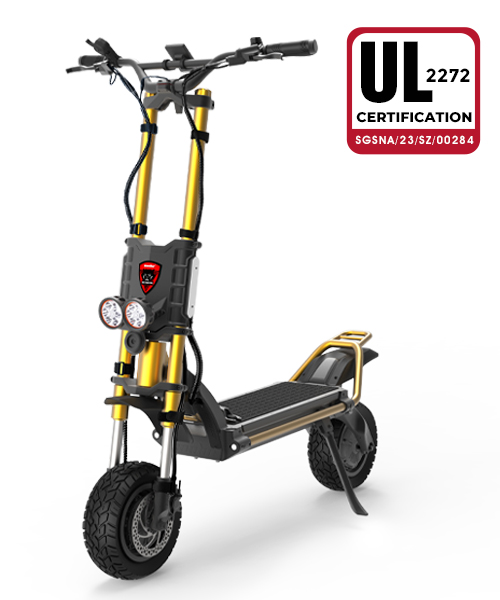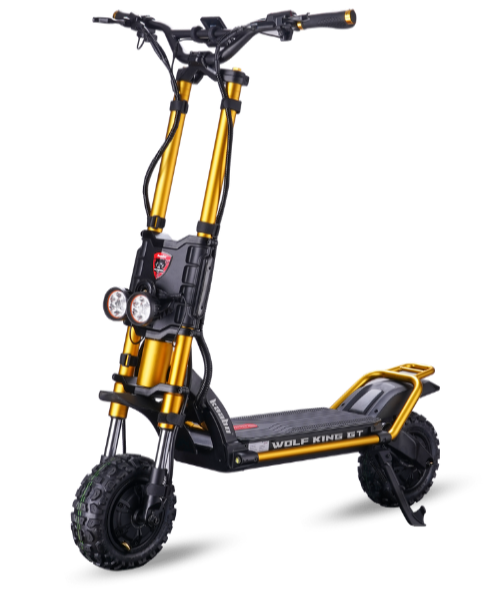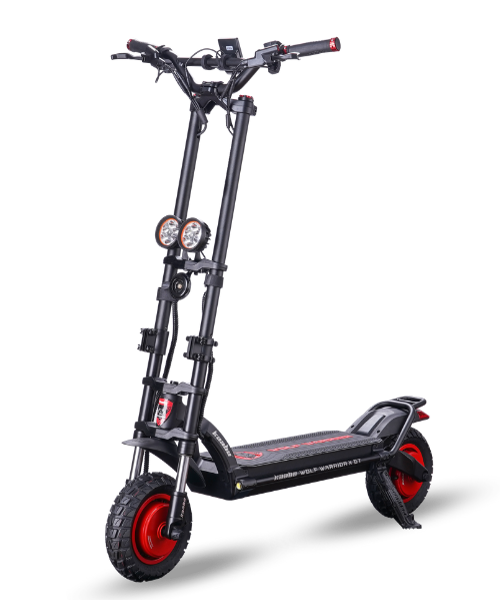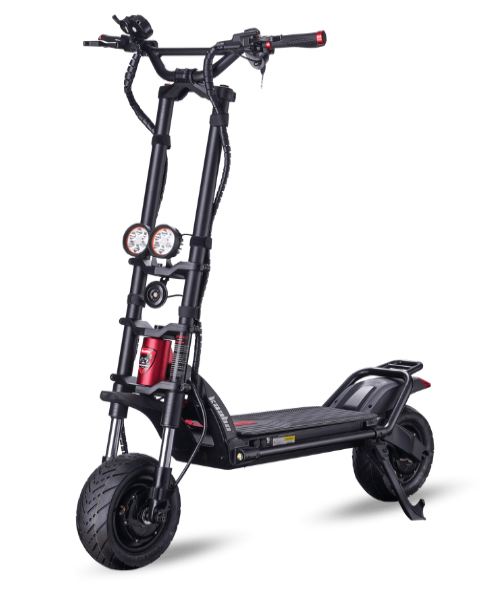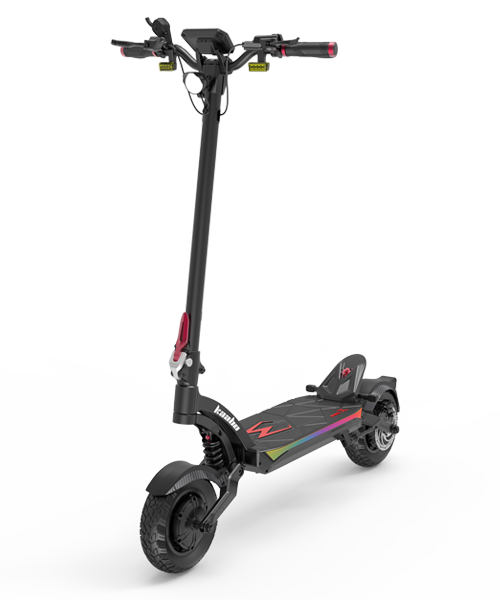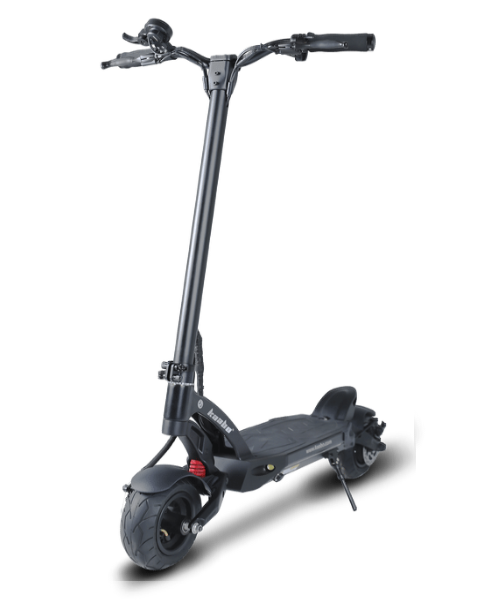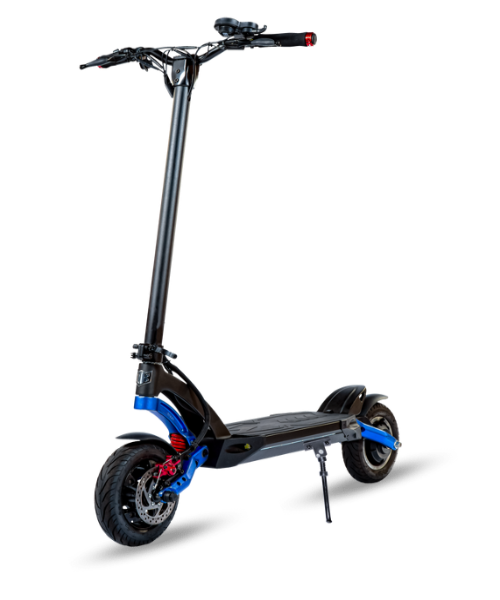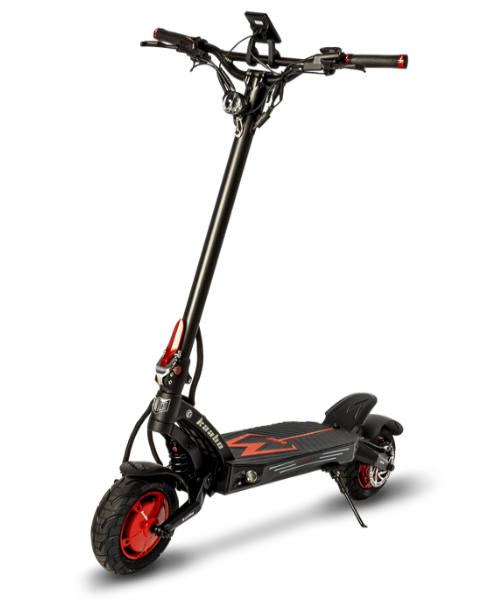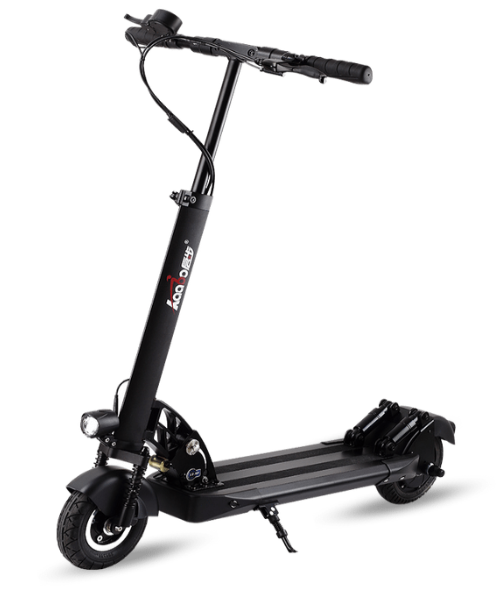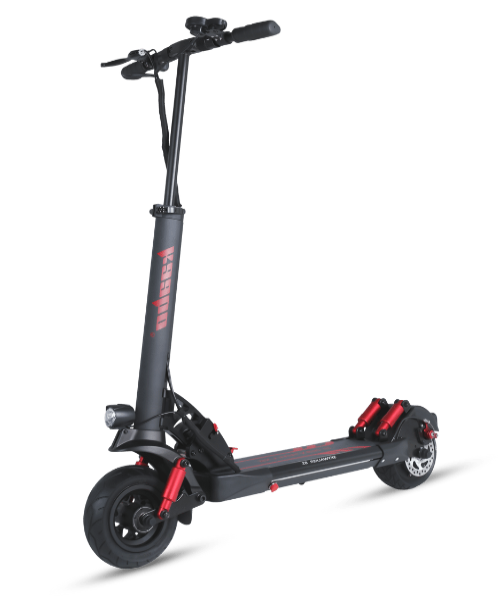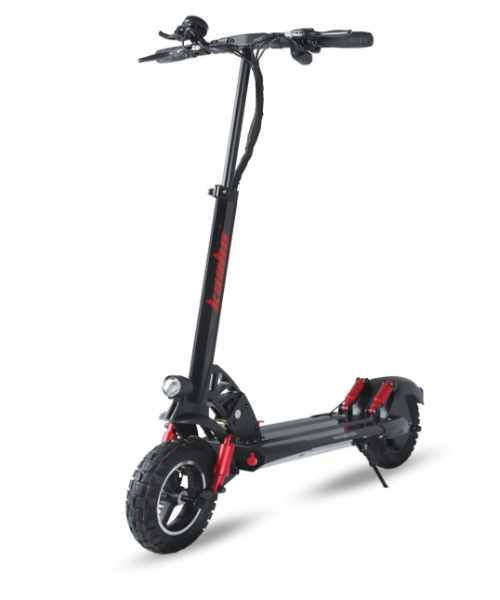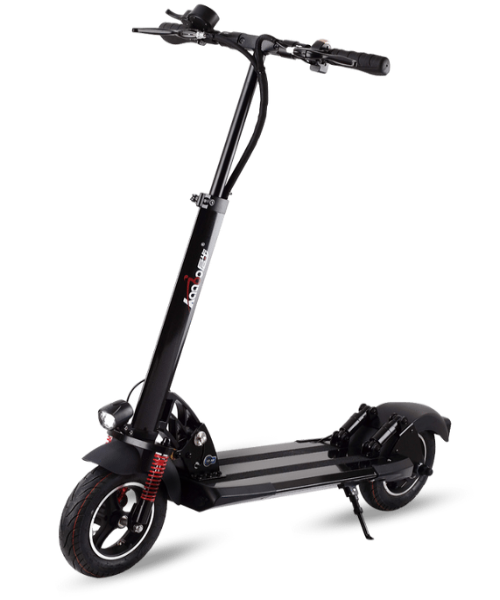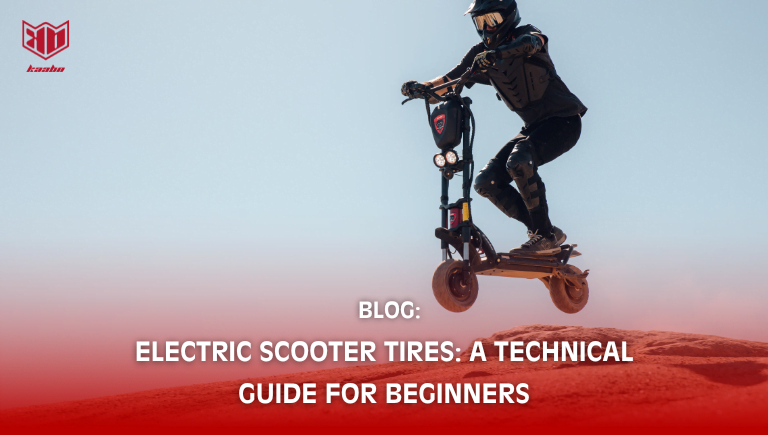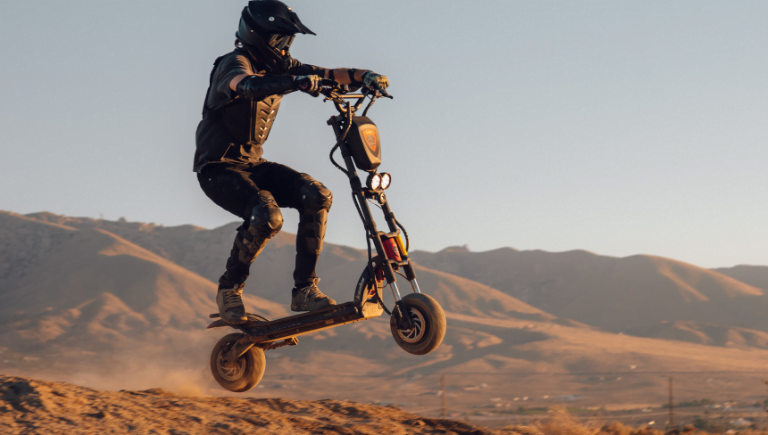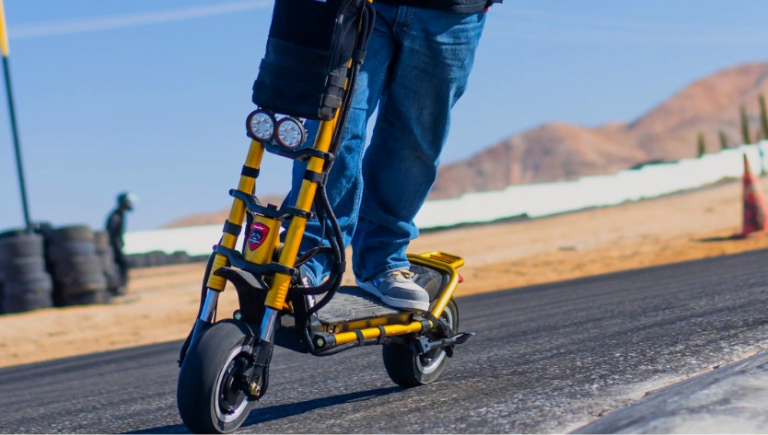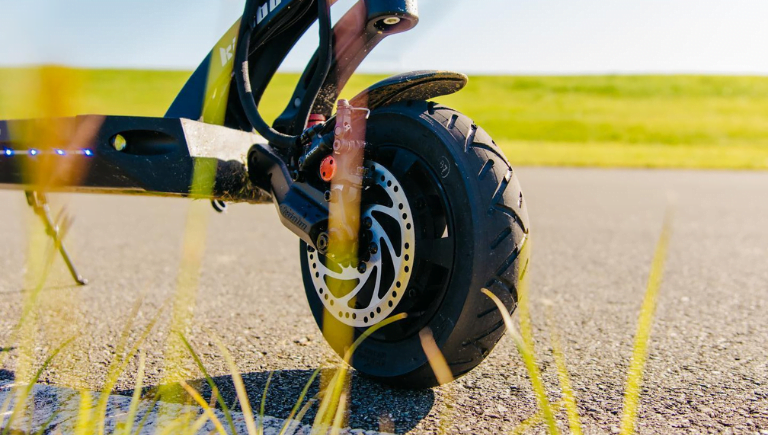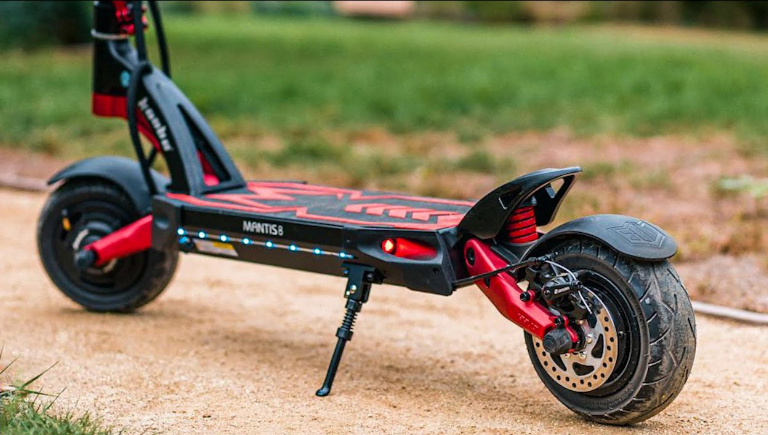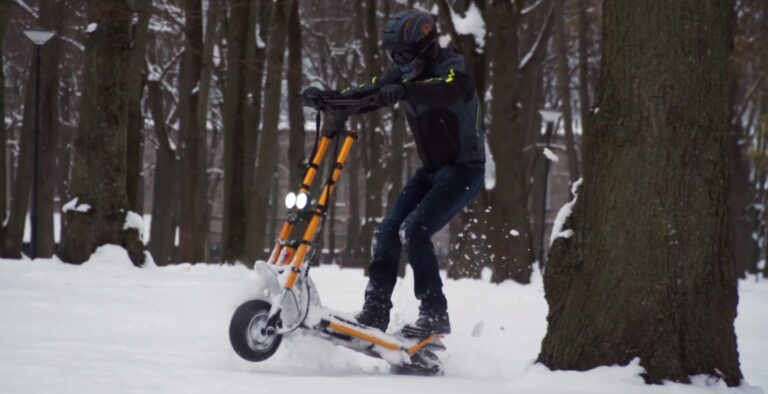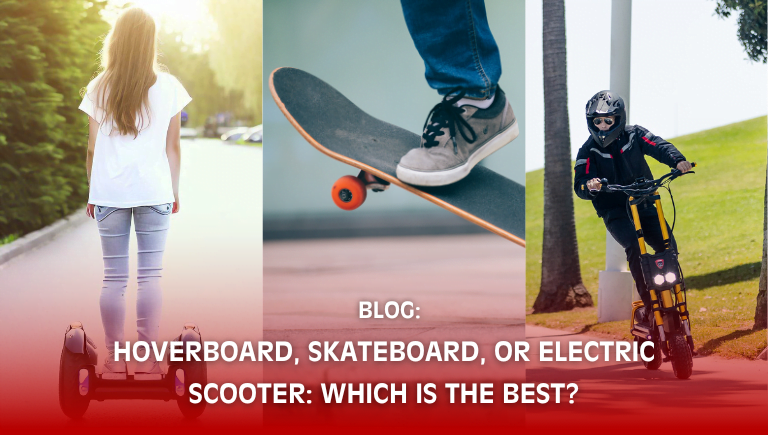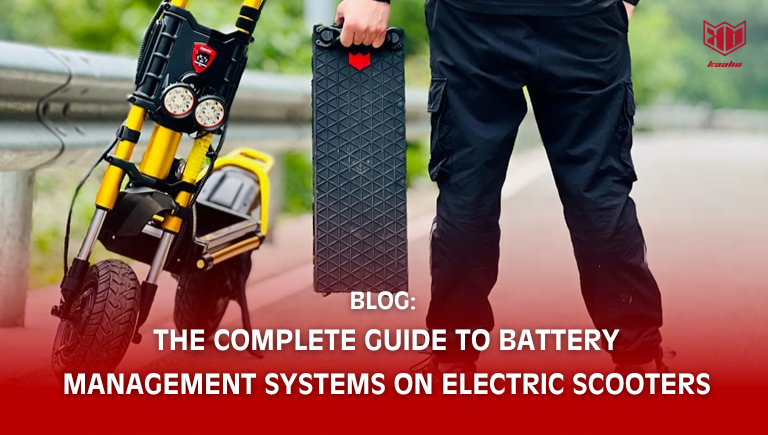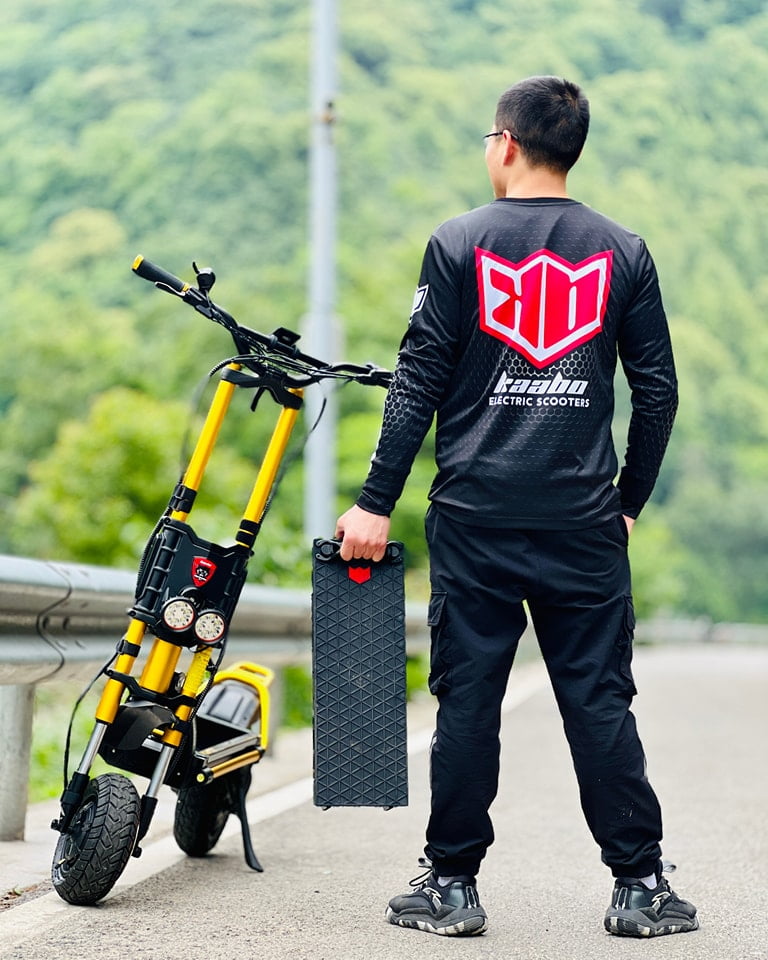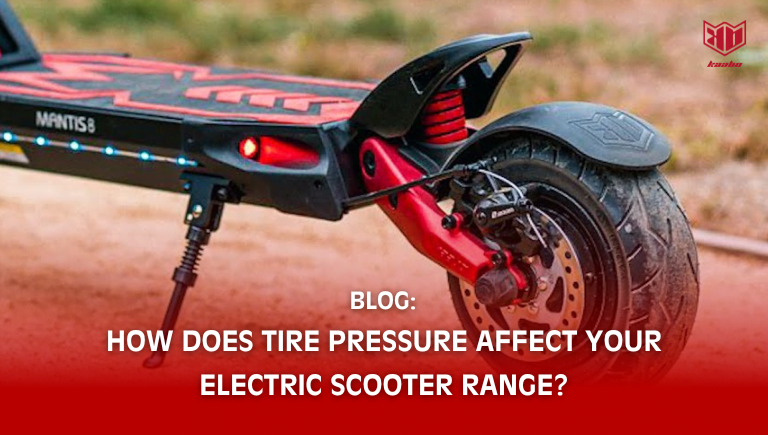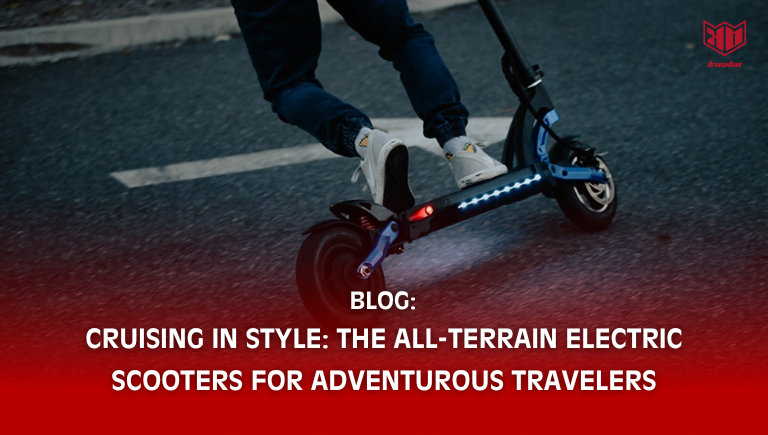
I. Introduction
Electric scooters have gained immense popularity as a convenient, eco-friendly mode of urban transportation. Despite their widespread use, one often underestimated component is the tires. In this Electric Scooter Tire guide, we’ll take a deep dive into the world of electric scooter tires, helping beginners understand the technicalities, make informed choices, and ultimately enhance their riding experience.
A. Understanding the Importance of Scooter Tires
Electric scooter tires are not just rubber rings around your wheels; they are the foundation of your entire riding experience. From ensuring your safety to affecting your scooter’s performance, these often-neglected components play a pivotal role.
Electric scooter tires impact:
Comfort: The level of comfort you experience during your rides, which is directly related to the shock-absorbing abilities of your tires.
Handling: Your ability to control your scooter, especially during turns and on various road surfaces.
Grip: The traction your tires provide, which is critical for both safety and performance.
B. Target Audience and Purpose of the Guide
This guide is designed with beginners in mind, whether you’re entirely new to electric scooters or looking to upgrade your existing ones. Our goal is to provide you with a comprehensive understanding of electric scooter tires, empowering you to make well-informed decisions about your tires and enjoy your rides to the fullest.

II. Types of Electric Scooter Tires
Electric scooter tires come in various types, each with its own unique set of advantages and disadvantages.
A. Pneumatic Tires
Pneumatic tires, also known as air-filled tires, are similar to what you might find on bicycles or cars. They have an inner tube filled with air, and their performance characteristics are notably different from solid rubber tires.
1. Advantages
Comfort: Pneumatic tires provide a cushioning effect, effectively absorbing shocks and vibrations from the road. This translates to a smoother and more comfortable ride, especially on uneven surfaces or long journeys.
Better Grip: These tires offer superior traction due to their ability to conform to the road’s surface irregularities, ensuring you maintain control even in challenging conditions.
2. Disadvantages
Maintenance: Pneumatic tires require regular maintenance, including checking and adjusting tire pressure. If the pressure is too low, it can lead to a reduced ride quality, while overinflation can result in a harsh ride.
Puncture Risk: One drawback is their susceptibility to punctures and flats. Riding over sharp objects or debris can lead to inconvenient and sometimes costly repairs.
B. Solid Rubber Tires
Solid rubber tires, as the name suggests, are entirely made of rubber, without an inner tube filled with air. These tires are known for their durability and low-maintenance characteristics.
1. Advantages
Low Maintenance: One of the most significant advantages of solid rubber tires is their virtually maintenance-free nature. You don’t need to worry about checking or adjusting tire pressure, and they are resistant to punctures.
Durability: Solid rubber tires are highly durable and can withstand rough terrain and challenging road conditions, making them ideal for urban environments with potholes and debris.
2. Disadvantages
Less Comfort: While they excel in durability and maintenance, solid rubber tires provide less cushioning compared to pneumatic tires. As a result, you might feel more road vibrations and bumps during your rides.
Reduced Traction: Solid rubber tires may not provide the same level of traction as pneumatic tires on certain surfaces, especially in wet or slippery conditions.

III. Tire Size and Compatibility
A. How to Choose the Right Tire Size
Selecting the correct tire size for your electric scooter is crucial. The size directly affects your scooter’s performance, handling, and overall safety.
When choosing the right tire size, consider the following factors:
Scooter Model: Different scooter models have varying tire size requirements. Refer to your scooter’s manual or manufacturer recommendations to find the appropriate size.
Riding Style: Your riding style and the type of terrain you frequent also impact your tire size choice. Smaller tires might be more suitable for compact urban commuting, while larger ones offer better stability and comfort for longer rides or off-road adventures.
Weight: Your weight, along with any additional cargo you might carry, influences tire selection. Ensure that the tires you choose have a sufficient load capacity to handle your weight comfortably.
B. Compatibility with Your Electric Scooter Model
Not all tires are universal, and not every tire will fit your electric scooter. To avoid compatibility issues and ensure a safe and enjoyable ride, it’s essential to confirm that the chosen tires are compatible with your scooter’s specifications.
Compatibility considerations include:
Wheel Size: Electric scooters come with wheels of various sizes. Ensure the tires you select match the wheel size of your scooter.
Hub Motor: If your scooter has a hub motor, consider whether the tires can accommodate it. Some tires are designed explicitly for hub motors and may offer better performance.
Clearance: Check that the new tires won’t interfere with other components of your scooter, such as the fenders or brakes.
By verifying compatibility, you’ll not only enhance your scooter’s performance but also maintain safety and longevity.

IV. Tread Patterns
Tread patterns are an often underestimated yet critical aspect of electric scooter tires. They significantly affect how your scooter handles different surfaces and weather conditions.
A. The Impact of Tread Patterns on Performance
Tread patterns aren’t just about aesthetics; they serve specific functions that influence your scooter’s performance. The choice of tread pattern can affect:
Traction: Tread patterns determine the amount of contact your tires have with the road. This impacts your scooter’s ability to grip the surface and maintain control.
Handling: Different tread patterns alter how your scooter handles turns, acceleration, and braking. Some patterns excel in specific areas, while others provide a more balanced approach.
Noise: Tread patterns also influence the noise levels produced by your scooter. Quieter patterns are preferable for a more enjoyable and less intrusive ride, especially in urban environments.
B. Types of Tread Patterns
Tread patterns can be broadly categorized into three main types, each optimized for specific riding conditions:
1. Street Tires
Street tires are designed for smooth urban roads, offering a balanced performance profile.
Advantages: These tires provide good traction on concrete and asphalt, making them suitable for city commuting and daily use.
Use Cases: If you primarily ride in urban environments and want a tire that performs well on typical roads, street tires are an excellent choice.
2. Off-Road Tires
Off-road tires are engineered for rough terrain and unpaved paths, where standard street tires might struggle.
Advantages: These tires offer excellent grip on dirt, gravel, and uneven surfaces, ensuring stability and control in off-road conditions.
Use Cases: If you plan to venture off the beaten path, explore trails, or ride on unpaved surfaces, off-road tires are essential for a safe and enjoyable experience.
3. Hybrid Tires
Hybrid tires aim to strike a balance between street and off-road performance.
Advantages: These tires provide versatility, making them suitable for mixed riding conditions. They offer decent traction on both urban roads and light off-road terrain.
Use Cases: If your riding includes a combination of city streets and occasional off-road excursions, hybrid tires offer the adaptability you need.
Selecting the right tread pattern depends on your typical riding environment and preferences. A well-chosen pattern can significantly enhance your scooter’s performance and safety on various surfaces.

V. Tire Pressure and Maintenance
Maintaining the proper tire pressure is essential for a safe and efficient electric scooter ride. It’s a fundamental aspect of scooter ownership that directly impacts your riding experience.
A. Importance of Proper Tire Pressure
Proper tire pressure is vital for several reasons:
Safety: Adequate tire pressure ensures your scooter maintains stability and control. Underinflated tires can lead to accidents, while overinflation can result in reduced battery life and a harsher ride.
Performance: The right tire pressure optimizes your scooter’s performance. It affects acceleration, braking, and overall handling, making your rides smoother and more efficient.
Tire Longevity: Maintaining the correct pressure extends the lifespan of your tires. Underinflated tires wear out faster and unevenly, leading to premature replacements.
B. How to Check and Maintain Tire Pressure
Checking and maintaining tire pressure is a simple yet crucial part of scooter ownership. Here’s how to do it:
Gather Tools: You’ll need a pressure gauge, a pump, and the manufacturer’s recommended tire pressure values.
Check Pressure: Locate the valve stem on your scooter’s tires and remove the valve cap. Attach the pressure gauge and check the current tire pressure.
Inflate or Deflate: Compare the measured pressure with the manufacturer’s recommendations. If the pressure is too low, use the pump to inflate the tire. If it’s too high, release some air until you reach the optimal pressure.
Regular Checks: Make it a habit to check your tire pressure before each ride, especially if you ride frequently. Temperature fluctuations can cause pressure changes, so monitoring is crucial.
C. Tire Rotation and Balancing
In addition to maintaining the proper pressure, tire rotation and balancing are essential for preserving your tires’ lifespan and performance.
Rotating your tires involves moving them to different positions on your scooter. Front and rear tires experience different wear patterns due to varying weight distribution and braking forces. Regular rotation ensures even wear, extending tire life and maintaining performance.
Balancing your tires ensures that the weight distribution is even around the tire’s circumference. Imbalanced tires can lead to vibrations, reducing ride comfort and potentially causing damage. Professional mechanics can balance your tires during maintenance checks.
Regular maintenance, including pressure checks, tire rotation, and balancing, is key to enjoying a smooth and safe ride on your electric scooter.

VI. Material Composition
The material composition of electric scooter tires plays a significant role in their performance, comfort, and durability.
A. Understanding Tire Materials
Electric scooter tires are typically made from various rubber compounds. The specific materials used can vary between manufacturers and tire models. Some tires also incorporate additives to enhance their properties, such as grip or longevity.
Understanding the common materials used in electric scooter tires can help you make informed choices:
Natural Rubber: This material provides excellent grip and flexibility, making it suitable for various riding conditions. It’s known for its durability and resistance to wear.
Synthetic Rubber: Some tires use synthetic rubber compounds, which can be engineered for specific purposes. These compounds might offer improved traction or longer lifespan.
Silica Additives: Silica is often added to tire compounds to enhance grip on wet surfaces. Tires with silica additives provide better wet-weather performance.
Hardness Variations: The hardness of the tire compound affects ride comfort and longevity. Softer compounds offer better grip but may wear out faster, while harder compounds offer durability but may compromise grip.
B. How Material Affects Ride Quality and Durability
The material composition of your scooter’s tires has a direct impact on your riding experience:
Ride Quality: Softer rubber compounds provide a smoother and more comfortable ride due to their shock-absorbing properties. Harder compounds can lead to a bumpier experience.
Grip: The type of rubber used in your tires affects their grip on the road. Softer compounds typically provide better traction, which is important for safety and performance.
Durability: The material’s durability is a critical factor. Softer compounds may wear out faster, while harder compounds tend to last longer but might compromise grip and comfort.
When selecting tires, consider your priorities. If you prioritize comfort and grip, softer rubber compounds might be ideal. However, if you’re looking for longevity and don’t mind sacrificing a bit of grip, harder compounds may be a better fit.
VII. Weather Considerations
Weather conditions significantly impact your scooter’s performance and safety. Your choice of tires should align with the weather you’ll encounter.
A. Tires for Wet Conditions
When riding in wet conditions, having the right tires can make all the difference in safety and control.
Tires suitable for wet conditions typically feature:
Deep Grooves: These tires have deep grooves and channels that help disperse water quickly, reducing the risk of hydroplaning.
Soft Rubber Compounds: Softer rubber compounds offer better grip on wet surfaces, minimizing the chances of slipping.
Tread Patterns: Tread patterns designed for wet conditions often incorporate sipes and cuts that enhance traction on slippery roads.
Choosing tires optimized for wet conditions is essential for a secure and confident ride when rain or wet roads are a concern.
B. Tires for Dry Conditions
In dry weather, your scooter’s tires need to provide reliable traction and performance.
Tires for dry conditions typically feature:
Solid Contact Surfaces: These tires often have continuous, solid contact surfaces that maximize traction on dry roads.
Harder Rubber Compounds: Harder rubber compounds provide durability and stability, ensuring predictable handling.
Minimal Grooves: Tires designed for dry conditions may have minimal grooves to maximize tire contact with the road.
Selecting tires suited for dry conditions ensures optimal performance and handling when rain and wet surfaces are not a concern.
C. Tires for Snow and Ice
Winter conditions, including snow and ice, require special consideration when choosing tires.
Winter-specific tires may include:
Studded Tires: Some tires have metal studs embedded in the rubber, providing exceptional grip on ice. However, these are often restricted or banned in certain areas due to road damage concerns.
Winter Tread Patterns: Tires designed for winter conditions feature aggressive tread patterns with deep grooves and sipes for improved traction on snow and ice.
Soft Rubber Compounds: Softer rubber compounds remain pliable in cold temperatures, ensuring grip even in freezing conditions.
If you plan to ride in winter weather, investing in tires specifically designed for snow and ice is essential to maintain safety and control.
VIII. Load Capacity and Weight Rating
Understanding load capacity is vital for your safety and the longevity of your scooter tires.
A. Calculating Load Capacity
Load capacity refers to the maximum weight your tires can safely support. Calculating the load capacity you need involves considering several factors:
Your Weight: Start by determining your weight and any additional cargo or items you carry while riding.
Luggage or Bags: If you routinely carry bags or other items, factor in their weight as well.
Scooter Weight: Consider your scooter’s weight, including the battery and other components.
Combined Weight: Add all these weights together to determine the total load your tires must support.
B. Ensuring Your Tires Can Handle the Load
Exceeding your tire’s load capacity can lead to tire failure, accidents, or reduced performance. To ensure safety and longevity:
Choose Tires with Adequate Load Capacity: When selecting tires, ensure that their load capacity exceeds the total weight you calculated. This provides a safety margin.
Regularly Check Load: Periodically reevaluate the weight you carry on your scooter. If you’ve added accessories or carry heavier loads, consider upgrading to tires with a higher load capacity.
Understanding and adhering to load capacity guidelines is crucial for a safe and enjoyable riding experience.
IX. Installing and Replacing Scooter Tires
Knowing when and how to replace your scooter tires is vital for your safety and ride quality.
A. DIY Tire Replacement Tips
Replacing your scooter’s tires can be a DIY project, but it requires the right tools and skills. Here are some tips for a successful DIY tire replacement:
Gather Tools: You’ll need tire levers, a bead breaker, a valve core tool, and a tire irons set.
Safety First: Always prioritize safety. Use appropriate protective gear and work in a well-ventilated area with good lighting.
Follow Manufacturer Instructions: Consult your scooter’s manual for specific instructions on tire replacement. Different scooters may have varying procedures.
Take Your Time: Tire replacement can be challenging, especially for beginners. Take your time to avoid damaging the tire, tube, or rim.
Inspect Inner Tubes: If your scooter uses pneumatic tires with inner tubes, inspect the tubes for any damage or wear. Replace them if necessary.
Proper Inflation: After replacing the tire, inflate it to the recommended pressure and double-check for leaks.
Remember, if you’re unsure about any aspect of tire replacement, it’s best to seek professional assistance to ensure safety and optimal performance.
B. When to Seek Professional Help
While some riders may be comfortable with DIY tire replacement, others might prefer professional assistance. Here are some scenarios when it’s advisable to seek help from a qualified mechanic:
Lack of Experience: If you’re new to scooter maintenance or don’t have experience with tire replacement, it’s safer to let a professional handle it.
Complex Repairs: If your scooter requires additional repairs or adjustments beyond tire replacement, a professional can address multiple issues simultaneously.
Hub Motor Tires: Replacing tires on scooters with hub motors can be more complex. Professionals have the expertise to handle these unique setups.
Safety Concerns: If you’re unsure about the safety of your scooter after replacing the tires or if you encounter handling issues, it’s crucial to have a professional mechanic inspect and rectify any problems.
Safety should always be your top priority when it comes to tire replacement. If you have any doubts or concerns, consult with an experienced mechanic to ensure your scooter’s tires are in optimal condition.
X. Performance Enhancement
Upgrading your scooter’s tires can significantly improve its overall performance.
A. Upgrading Tires for Better Performance
Your choice of tires can make a substantial difference in your scooter’s performance. If you’re looking to enhance your riding experience, consider the following aspects:
Tire Type: Evaluate your riding style and terrain. If you primarily ride on smooth city streets, switching to high-performance street tires can improve acceleration and handling. Conversely, if you enjoy off-road adventures, investing in durable off-road tires can provide better traction and control.
Tire Size: Experimenting with tire sizes can affect your scooter’s handling characteristics. Smaller tires can enhance maneuverability, while larger ones may provide greater stability at higher speeds.
Tire Pressure: Fine-tuning tire pressure can optimize your scooter’s performance. Higher pressures can increase speed, while lower pressures provide a more comfortable ride. Adjust pressure based on your preferences and riding conditions.
Tread Patterns: If you want to explore different terrains, consider tires with versatile tread patterns that can handle various surfaces effectively.
Durability: Some high-performance tires are designed for longevity and reduced wear. These tires can be a worthwhile investment if you’re a frequent rider.
Remember that upgrading your tires may require adjustments to your riding style and additional maintenance. Experiment with different tire options to find the combination that best suits your needs.
B. The Role of Tire Pressure in Performance
Tire pressure is a critical factor in your scooter’s overall performance. It influences various aspects of your ride:
Acceleration: Higher tire pressures can lead to better acceleration, as less energy is lost to tire deformation.
Speed: Increased tire pressure can also contribute to higher top speeds, making your scooter faster.
Handling: Lower tire pressures provide a smoother and more comfortable ride, especially on uneven surfaces. However, higher pressures can enhance handling and responsiveness.
Range: Properly inflated tires can extend your scooter’s range by reducing rolling resistance. This can be particularly important if you rely on your scooter for daily commuting.
To optimize performance, consider experimenting with different tire pressures and monitoring the results. Find the balance that aligns with your riding style and preferences.
XI. Safety and Handling
Safety is paramount when riding an electric scooter, and different tire types require varying levels of skill and caution.
A. Tips for Safe Riding on Different Tire Types
Safety measures and riding techniques should align with your chosen tire type:
Pneumatic Tires: When riding on pneumatic tires, be cautious of potential punctures. Check tire pressure regularly and carry necessary tools for minor repairs. Practice smooth braking and steering to avoid skidding.
Solid Rubber Tires: While solid rubber tires are resistant to punctures, they provide less shock absorption. Adjust your riding style to accommodate the bumpier ride. Maintain a safe speed on uneven terrain.
Tread Patterns: Be aware of how your chosen tread pattern affects handling. Street tires excel on smooth surfaces but may not perform well off-road. Off-road tires offer great traction but may have reduced stability on asphalt.
Understanding the characteristics of your tires and adapting your riding style accordingly is essential for a safe and enjoyable experience.
B. Handling Challenges with Various Tires
Different tire types respond differently to road conditions:
Wet Roads: Pneumatic tires with good tread patterns offer better grip on wet roads. Solid rubber tires may be more prone to slipping, so exercise caution in rainy conditions.
Off-Road Adventures: Off-road tires are designed for rough terrain, offering excellent traction and control. However, they may have limitations on smooth roads, so adjust your speed and handling when transitioning between surfaces.
Urban Riding: Street tires are perfect for urban commuting, providing a smooth and stable ride on city streets. Be mindful of road hazards like potholes and debris that can impact tire longevity.
Mixed Terrain: If you frequently switch between urban and off-road riding, hybrid tires can provide a versatile solution. Adapt your riding style to make the most of their capabilities in different environments.
Recognizing these challenges and adapting your riding techniques can help you navigate various conditions safely and confidently.
XII. Cost Considerations
Your budget is an important factor when choosing electric scooter tires.
A. Budget-Friendly Tire Options
If you’re on a tight budget, don’t worry; there are affordable tire options available that offer decent performance and safety. Consider these budget-friendly choices:
Standard Replacement Tires: Many electric scooters come with decent stock tires. Replacing them with similar models can be a cost-effective way to maintain performance.
Economical Street Tires: Basic street tires are often budget-friendly and suitable for daily commuting. Look for reputable brands that offer good value for money.
Tire Sales and Promotions: Keep an eye out for sales, discounts, and promotions from tire manufacturers or scooter retailers. You might find high-quality tires at reduced prices.
B. Balancing Cost and Quality
While budget considerations are important, it’s essential to strike a balance between cost and quality. Investing in higher-quality tires can provide several benefits:
Performance: Premium tires often deliver better traction, handling, and overall performance, enhancing your riding experience.
Durability: Higher-quality tires tend to be more durable, reducing the frequency of replacements and long-term costs.
Safety: Quality tires offer better grip and control, contributing to safer rides, especially in challenging conditions.
When evaluating tire options, weigh the long-term value against the upfront cost. Consider factors such as durability, performance, and safety to make an informed decision that aligns with your budget and riding needs.
XIII. Environmental Impact
Your choice of electric scooter tires can also have an environmental impact.
A. Sustainable Tire Choices
If you’re environmentally conscious, you may want to explore tire options that align with your sustainability values:
Eco-Friendly Materials: Some tire manufacturers prioritize sustainability by using eco-friendly materials and production processes. Look for tires made from recycled or renewable materials.
Low Rolling Resistance: Tires with low rolling resistance require less energy to move, which can contribute to increased energy efficiency and reduced carbon emissions.
Extended Lifespan: High-quality tires that last longer can reduce the frequency of tire replacements, minimizing waste.
By choosing tires with sustainability features, you can reduce your scooter’s environmental footprint while enjoying your rides guilt-free.
B. Recycling and Disposal of Old Tires
When it’s time to replace your old tires, be mindful of responsible disposal:
Recycling: Explore local recycling options for tires. Many areas have recycling centers that accept old tires, ensuring they are properly processed and reused.
Local Regulations: Familiarize yourself with local regulations regarding tire disposal. Some regions have specific guidelines for handling and disposing of used tires.
Reuse or Repurpose: Consider repurposing old tires for DIY projects or garden landscaping. They can be transformed into useful items like planters, swings, or workout equipment.
Proper tire disposal is essential to minimize environmental impact and support sustainability efforts.
XIV. Brand and Model Recommendations
Choosing the right tire brand and model can be a daunting task, given the wide range of options available. Here are some recommendations to help you make an informed choice:
A. Top Brands for Electric Scooter Tires
Several reputable tire manufacturers are known for producing high-quality electric scooter tires. Some of the top brands to consider include:
Michelin: Michelin is renowned for its premium tires across various vehicle types, and they offer electric scooter tires known for their durability and performance.
Kenda: Kenda specializes in a wide range of tires, including those designed for electric scooters. They offer reliable options suitable for different riding conditions.
Pirelli: Pirelli, a well-established tire brand, provides electric scooter tires recognized for their grip and handling capabilities.
Bridgestone: Bridgestone offers a variety of scooter tire options, including models designed for urban commuting and performance riding.
Continental: Continental is a trusted tire brand known for its innovative tire technologies, and they produce electric scooter tires with a focus on safety and performance.
B. Popular Models for Different Use Cases
The ideal tire model for your scooter depends on your specific use case:
Daily Commuting: If you primarily use your scooter for daily commuting on city streets, consider models like the Michelin City Grip or Kenda K657 Challenger.
Performance Riding: For those who enjoy spirited rides and want enhanced handling and grip, options like the Pirelli Diablo or Michelin Pilot Sport are worth exploring.
Off-Road Adventures: If you plan to explore off-road terrain, consider tires like the Kenda K761 Dual Sport for versatile performance.
Mixed Terrain: Hybrid tires like the Continental ContiScoot provide a balance between street and off-road capabilities.
When selecting a specific tire model, be sure to read user reviews and seek recommendations from fellow riders who share your riding preferences and conditions.
XV. Real User Experiences
Learning from the experiences of other scooter enthusiasts can provide valuable insights into tire performance.
A. Testimonials and Reviews
Real user feedback offers a wealth of information about specific tire models. Reading testimonials and reviews can help you understand the pros and cons of different options.
Ride Comfort: User reviews often highlight how comfortable a particular tire is on various road surfaces.
Grip and Handling: Riders share their experiences with traction, stability, and overall handling characteristics.
Durability: Look for comments on the longevity of the tires and whether they hold up well over time.
Performance in Different Conditions: Assess how a tire performs in wet, dry, or off-road conditions based on user feedback.
XVI. Maintenance and Care
A. Routine Tire Maintenance
Regular maintenance is essential to ensure your electric scooter tires perform optimally and have a long lifespan. Here’s a checklist for maintaining your tires:
- Tire Pressure: Check and adjust tire pressure according to the manufacturer’s recommendations. Use a quality pressure gauge and fill with the appropriate amount of air.
- Visual Inspection: Examine your tires regularly for signs of wear, damage, or embedded debris. Look for cuts, cracks, bulges, or foreign objects lodged in the tread.
- Tire Rotation: If you have dual tires, consider rotating them periodically to ensure even wear. Refer to your scooter’s manual for guidance on rotation intervals.
- Balancing: If you notice vibrations or wobbling during rides, consider having your tires balanced by a professional mechanic.
- Cleaning: Keep your tires clean from dirt and debris. This not only improves aesthetics but also prevents abrasive particles from causing premature wear.
B. Handling Punctures and Repairs
Despite your best efforts, punctures can still occur. Here’s what to do if you experience a flat tire:
- Safety First: If you notice a sudden loss of air pressure or a flat tire while riding, slow down and come to a safe stop.
- Inspect the Damage: Examine the tire for the source of the puncture, such as a nail or sharp object. Remove the object if it’s safe to do so.
- Repair or Replace: Depending on the severity of the puncture, you can choose to repair the tire using a patch kit or replace it entirely.
- Professional Help: If you’re uncertain about the repair process or if the damage is extensive, seek assistance from a professional tire repair service.
C. Storage and Seasonal Care
If you plan to store your electric scooter for an extended period or during specific seasons, consider these precautions:
- Proper Storage: Store your scooter in a dry, cool place away from direct sunlight, extreme temperatures, and moisture. This helps preserve tire integrity.
- Elevate Your Scooter: If possible, elevate your scooter off the ground to prevent prolonged pressure on the tires.
- Reduce Pressure: Slightly deflate the tires to reduce pressure during storage. Check and re-inflate to the recommended pressure when you’re ready to ride again.
XVII. FAQs
A. Frequently Asked Questions About Electric Scooter Tires
Here are some common questions riders often have about their scooter tires:
1. How often should I check my tire pressure?
Tire pressure should be checked before each ride, especially if you haven’t ridden your scooter for a while. Temperature changes can affect tire pressure, so regular checks are essential.
2. Can I use any tire sealant for puncture repair?
Not all tire sealants are suitable for electric scooter tires. It’s best to use sealants specifically designed for tubeless or tube-type scooter tires. Refer to the manufacturer’s recommendations.
3. Do I need to replace both front and rear tires simultaneously?
In most cases, it’s not necessary to replace both tires simultaneously. However, if one tire has significantly more wear or damage than the other, it’s a good idea to replace the affected tire to maintain balanced performance.
4. Are solid rubber tires better than pneumatic tires for electric scooters?
Solid rubber tires are known for their durability and low maintenance, making them suitable for certain conditions. However, pneumatic tires often provide a smoother and more comfortable ride, especially on rough terrain.
5. Can I mix different tire brands or models on my electric scooter?
While it’s possible to mix tire brands or models, it’s generally recommended to use matching tires on both wheels for consistent performance and handling. Mixing tires may affect your scooter’s balance and ride characteristics.
B. Seeking Professional Advice
If you have specific questions or concerns about your electric scooter tires, it’s advisable to consult with a professional scooter mechanic or tire specialist. They can provide personalized guidance based on your scooter’s specifications and your riding preferences.
XVIII. Conclusion
A. Enhancing Your Electric Scooter Experience
Electric scooter tires are a vital component that significantly influences your riding experience, safety, and performance. By understanding the different types of tires, considering factors like size, tread pattern, and material composition, and following proper maintenance practices, you can ensure your electric scooter tires serve you well on your urban adventures.
Whether you’re navigating city streets, exploring off-road trails, or simply commuting to work, making informed choices about your scooter tires will contribute to a safer, more comfortable, and enjoyable ride. Stay informed, stay safe, and enjoy the freedom and convenience that electric scooters offer.
More Blogs:
Follow our YouTube channel

